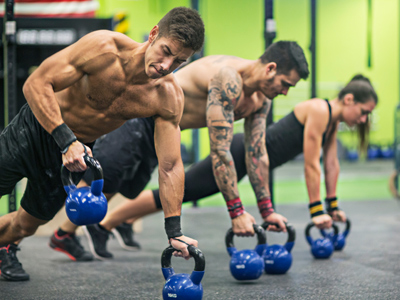

There are over 600 muscles in the human body!
Basic Anatomy - The Muscles
This Science quiz is called 'Basic Anatomy - The Muscles' and it has been written by teachers to help you if you are studying the subject at middle school. Playing educational quizzes is a fabulous way to learn if you are in the 6th, 7th or 8th grade - aged 11 to 14.
It costs only $19.50 per month to play this quiz and over 3,500 others that help you with your school work. You can subscribe on the page at Join Us
In middle school science on basic anatomy you will study the skeleton of the human body and learn that every adult possesses a total of 206 bones. That seems like quite a lot but when compared to the muscles of the body, the number of bones is only a fraction. There are close to 640 plus muscles in the human body or 320 pairs of muscles. The muscles attach to bones and connect at joints.
Three Types of Muscles
1. Skeletal Muscles: Skeletal muscles are just what they sound to be. They are the muscles that move the body’s skeleton (bones). All skeletal muscles are voluntary muscles.
2. Smooth Muscles: Smooth muscles are the muscles that are found in our internal organs. This includes in our digestive system, our blood vessels, our bladder, our respiratory organs, and, in females, the uterus. They can stretch and maintain tension over an extended period of time. Smooth muscles are involuntary which means you don’t have to think about them in order for the brain to send a signal to them. Rather, they react automatically through the nervous system.
3. Cardiac Muscles: Cardiac muscles are found in the heart. These muscles can stretch like the smooth muscles and they can contract like skeletal muscles. These muscles move in a twitching motion and, like the smooth muscles, they are involuntary.
We could not possibly address all 640 plus muscles in this quiz but we will focus on the ones that you will hear of most often in their simplest form. These include:
The deltoid muscle is located at the shoulders and includes an interior head and a middle head. It is worked when the arm is rotated.
The bicep muscle is located at the upper part of the arm and will bulge when you make a fist. This muscle flexes the arm.
The triceps muscles are also located in the upper part of the arm and work when the arm is extended. It extends the forearm at the elbow joint.
The rectus femoris muscle is located in the leg and works the tibia and fibula. If flexes the thigh at the hip and extends the leg at the knee.
The frontalis muscle is located around the eyes and the nose on the face and is responsible for raising the eyebrows and wrinkling the forehead.
The risorius muscle is also located in the face and is responsible for drawing the lips into a smile.
The hamstrings muscles (of which there are three) are located in the upper leg and work to bend the knee.
The quadriceps muscles (of which there are four) are located in the upper leg and work to extend the knee.
The tibialis anterior muscle is located at the back of the lower leg and works to raise the front of the foot.
The soleus muscle (also known as the calf muscle) is located at the back of the lower leg and works to raise the heel when the leg is bent.
Doctors and others in the medical profession need to learn each and every muscle and how they work together. If that is the field you would like to one day pursue, this quiz will be a good start to seeing if you can remember some of the more commonly known muscles. Be sure to read this introduction over several times to remember the muscles. When you are ready, move ahead and answer the following ten questions about muscles.
Ready for more?
not all...
quizzers. Try to win a coveted spot on our Hall of Fame Page.






